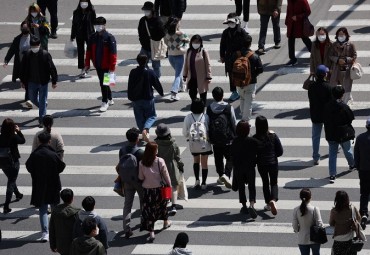
Figures are on the side of unsatisfied film fans, as the number of days dominated by most-watched movies shot from just six days a year in 2013 to 30 days in 2016, according to data from the Korean Film Council. (Image: Yonhap)
SEOUL, March 21 (Korea Bizwire) — South Koreans now have limited options at the cinema with only a few blockbuster films dominating the big screen.
Touted by major movie theater chains, large-budget films from major film studios have been carrying water for the industry, bringing millions of people to the cinema, and coining the term ’10 million movie’, as the 10 million viewer threshold has become an indicator of a movie’s success in the nation.
Many moviegoers aren’t happy, however, as a monopolistic approach adopted by major film distributors has begun to fill cinema screens with a small number of films, depriving film buffs of choice.
Figures are on the side of unsatisfied film fans, as the number of days dominated by most-watched movies shot from just six days a year in 2013 to 30 days in 2016, according to data from the Korean Film Council.
The top three South Korean cinema chains, CGV, Lotte Cinema, and Megabox also allot more screens to films produced by their film distribution subsidiaries, the data showed.
Though the number of newly released independent films went up, their market share declined between 2012 and 2016.

More than 50 percent of the screenings across the country on that day were of ‘Battleship Island’, which meant significantly fewer opportunities for other films. (Image: Yonhap)
Last year, the film ‘Battleship Island’ (Gunhamdo) smashed the opening day box office record, but came under fire over controversy surrounding the number of cinemas that screened the film.
The major blockbuster hit was played over 10,000 times on more than 2,000 screens during opening day alone.
More than 50 percent of the screenings across the country on that day were of ‘Battleship Island’, which meant significantly fewer opportunities for other films.
When the discussion over big screen monopoly heated up last year, film director Min Byung-hun took to Facebook, calling the monopoly ‘pure madness’, while sarcastically suggesting that the cinema screen number should set a Guinness record.

The top three South Korean cinema chains, CGV, Lotte Cinema, and Megabox also allot more screens to films produced by their film distribution subsidiaries, the data showed. (Image: Yonhap)
Against this backdrop, some in the film industry are voicing their concerns.
In a recent interview with eNEWS24, Actor Kim Sang-kyung shared his feelings on the issue of screen monopoly.
“I’ve been in both major blockbusters and indie films, and every film has its own purpose. It’s only when small movies survive that there is diversity in the film industry. Some movies attract 1 million people, while others pull in 2 million. I hope viewers can enjoy a wide range of movies, instead of those ‘10 million’ films that are being churned out.”
Film critic Kim I-seok says blockbusters are the barometer of how healthy a film industry is.
“To measure how healthy a film industry is, you need to look at the number of new directors there, as well as how many successful low-budget movies there are,” he noted.

South Koreans now have limited options at the cinema with only a few blockbuster films dominating the big screen. (Image: Yonhap)
Independent Films on the Rise
Slowly but surely, lower-budget South Korean films are gaining ground. The success of the South Korean film ‘Little Forest’ vouches for the trend.
Directed by Yim Soon-rye, the low-budget film with an estimated production cost of 1.5 billion won has attracted 800,000 viewers in its first week.
The film centers on the life a female protagonist named Hye-won, who moves to the country for a quieter life after feeling tired of city life in Seoul. Though Hye-won originally planned to stay in the country for a short period of time, she farms and cooks for her old friends, and ends up spending four seasons in a rural area.

South Koreans now have limited options at the cinema with only a few blockbuster films dominating the big screen. (Image: Megabox Plus M)
Hye-won’s rather ordinary storyline has resonated with many moviegoers, propelling the film to a top-3 position at the South Korean box office, leaving behind Hollywood films Tomb Raider and The Hurricane Heist.
“Over the last few years, South Korean moviegoers have become more diverse with a broader spectrum of film interests, reshaping the film production world. The line between low-budget edgy films with a clear target audience and major blockbuster films is being drawn clearer than before,” an industry official said.
Hyunsu Yim (hyunsu@koreabizwire.com)






![[Kobiz Stats] Ratio of Experiencing Cyber-Bullying and Cyber-Bullied [Kobiz Stats] Ratio of Experiencing Cyber-Bullying and Cyber-Bullied](http://koreabizwire.com/wp/wp-content/uploads/2014/04/사이버불링-영문-370x503.jpg)